- Overstory
- Posts
- Central Park's Owls
Central Park's Owls
Barry and Flaco's stories of hunting in the city
The other night I went to an event at the Explorer’s Club in the Upper East Side. I saw a talk on urban wildlife with a panel consisting of an environmental lawyer and two wildlife photographers based in the city, David Lei and Jacqueline Emery. If you have ever seen a story in The New York Times on urban wildlife, there is a good chance the photo was taken by one of them. Most of the photos in this post were taken by David Lei.
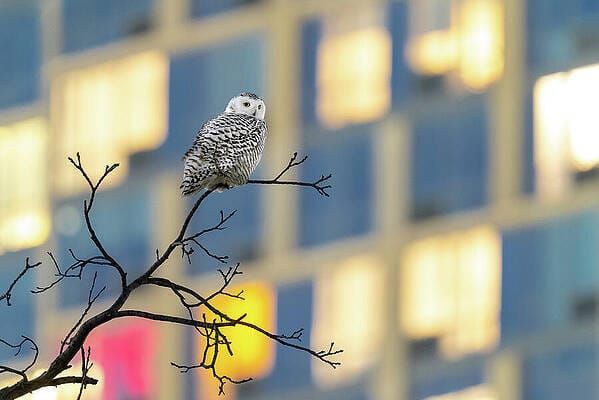
A snowy owl made its way south to Central Park during the winter | David Lei
Through a series of pictures, they told the story of their photographic journeys but also the story of two owls and a pair of coyotes that have called Central Park home. The series of photos along with their voice-over was captivating and a testament to themes on wildlife persisting in the city, which I have written about in prior posts.
The evening left me with two takeaways. The first is community and connection— it was clear that these photographers and wildlife enthusiasts had a tight-nit community. Especially for the photographers, countless nights of brushing shoulders in the Park or collaborating to find an owl or a coyote led to friendships and a deeply shared passion.
Even for those outside the diehard community, though, there is something about these urban animals that captures people’s attention, giving us all something to look at and talk about. Part of it is the novel experience of seeing something that “doesn’t belong” in the city. And I imagine part of it is like having a class pet— it’s just fun to watch and see what they’re doing.
The second takeaway was more of a reflection on the place of wildlife in urban settings. There is a tremendous benefit to having this. There is the community and connection that I mentioned above, I think there is value in making space for other species to co-exist alongside us, and perhaps most importantly, it helps us avoid the out-of-sight, out-of-mind problem whereby we risk going down the slippery slope of losing substantially all wild spaces and forgetting that we are still part of an ecosystem. How we manage this is a delicate balance, though. As you will read below, a new landscape creates new challenges for wildlife.
Barry the Barred Owl
Barred owls are one of the more common types of owls in the Eastern U.S. Despite this, I’ve only actually seen one once. It was late at night on my way back from the library in college. I have heard them more often, both in the woods in Virginia and just a couple weeks ago in New Hampshire.
In 2020, during the midst of the pandemic, a barred owl was spotted in Central Park. She quickly gained some notoriety as dedicated bird watchers, including the photographers on the panel, would wake up before dawn and attempt to track her down in the park. Not knowing her gender, people started calling her Barry and the name stuck.
Barry quickly developed an entourage. Twitter accounts like the Manhattan Bird Alert would tweet out her location and people would come looking.
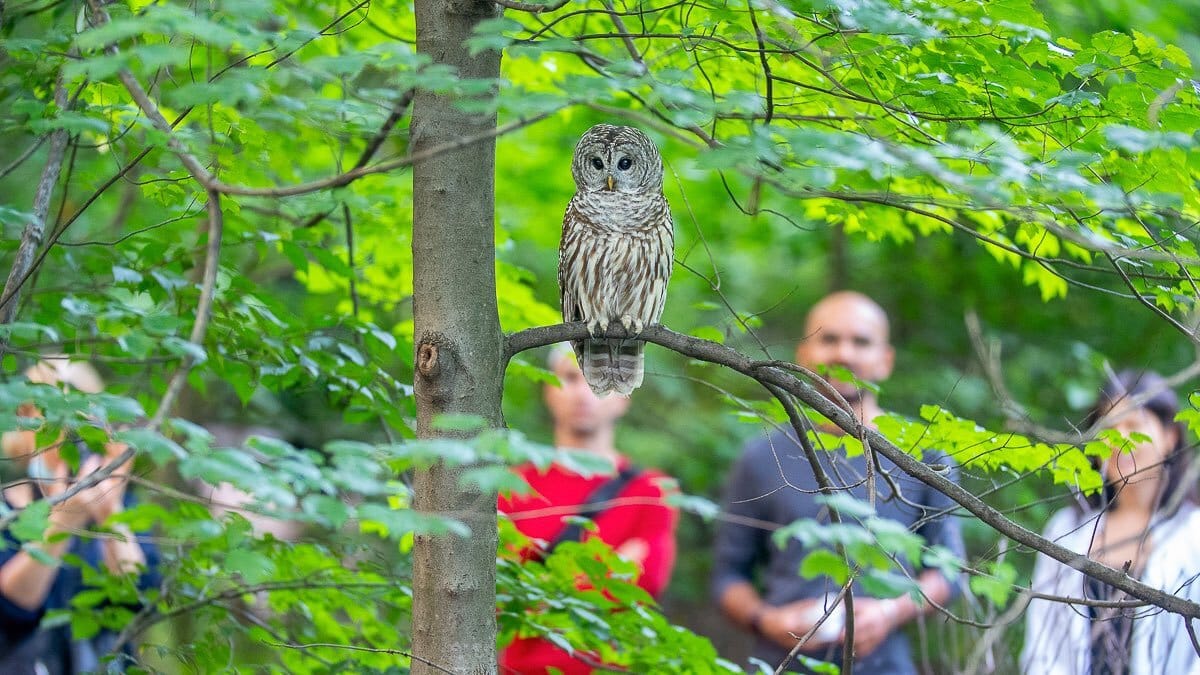
Barry entertaining a crowd of spectators | David Lei
By night and in the early morning, photographers captured images of her hunting, primarily for rats and crayfish. And occasionally in the daylight, she could be found observing the park.
Barry’s life in the city was so well documented by these photographers, that a personality started to develop. While to us, her wildness was something novel, to Barry, the city presented its own curiosities.
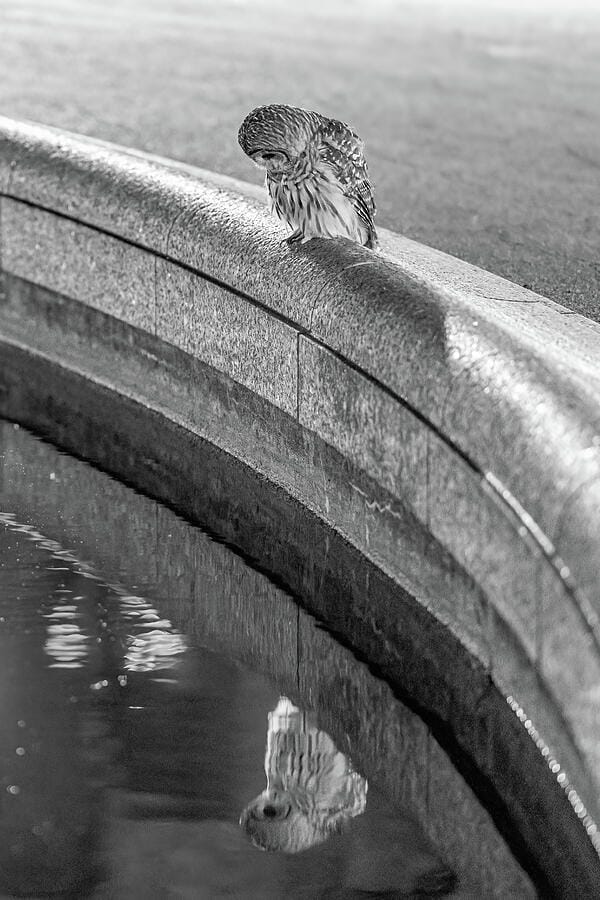
Barry admiring her reflection | David Lei
This juxtaposition of wildlife in an urban setting that is so well manicured and choreographed by humans is fascinating. During the talk, I couldn’t help the debate in my head. These animals bring so much joy to people, they remind us of the natural spaces that we have paved over, they lead to people educating themselves and caring. But, is the city as we have designed it really a place for wildlife?
Barry’s life came to a sad end when it was hit by a maintenance vehicle in the park. A “bird autopsy” was done and they found extremely high levels of rodenticide in her system— which likely led to her lack of coordination at the time of her death.
The findings led to an increased focus on anticoagulant rodenticides which are commonly used to kill rats. They bind to internal tissue and kill the target slowly over time as their organs break down. The issue is that these poisons are intended to resist breaking down, causing them to linger in our ecosystem and build up the food chain— as in this case.
Flaco
On February 2, 2023, someone broke into the Central Park Zoo and cut a hole in the enclosure of the Eurasian eagle-owl. The previously captive owl, Flaco, had been born in captivity 13 years before. He had lived his whole life with scheduled meals from zookeepers and limited flight experience.
In a scene straight out of the movie Madagascar, a search for Flaco was launched, with a primary concern being that he was not fit to fend for himself in the wild. Sure enough within a day, he was found standing outside the Bergdorf Goodman Building on 5th Ave. Police officers put out a cage, hoping that he would voluntarily get into it… he did not.
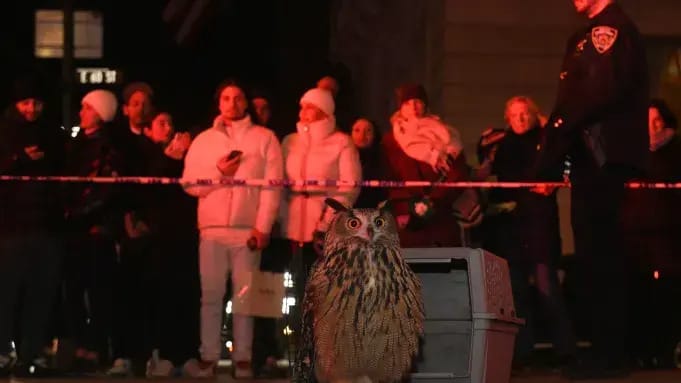
Flaco’s first failed recapture attempt
Over the next week, the zoo and police continued their efforts to locate and recapture Flaco with no success. Meanwhile, sightings of Flaco showed him flying with more confidence. Still many, including zoo officials, were concerned that he would starve, unable to hunt for himself.
Those concerns eased after the first week when news broke that Flaco was successfully hunting on his own. Remarkably, #freeflaco started swirling around social media and a petition was submitted to the zoo to call off the search. Given his seemingly improving hunting abilities and concern that trapping attempts would only hurt him, they obliged and Flaco was a free owl.
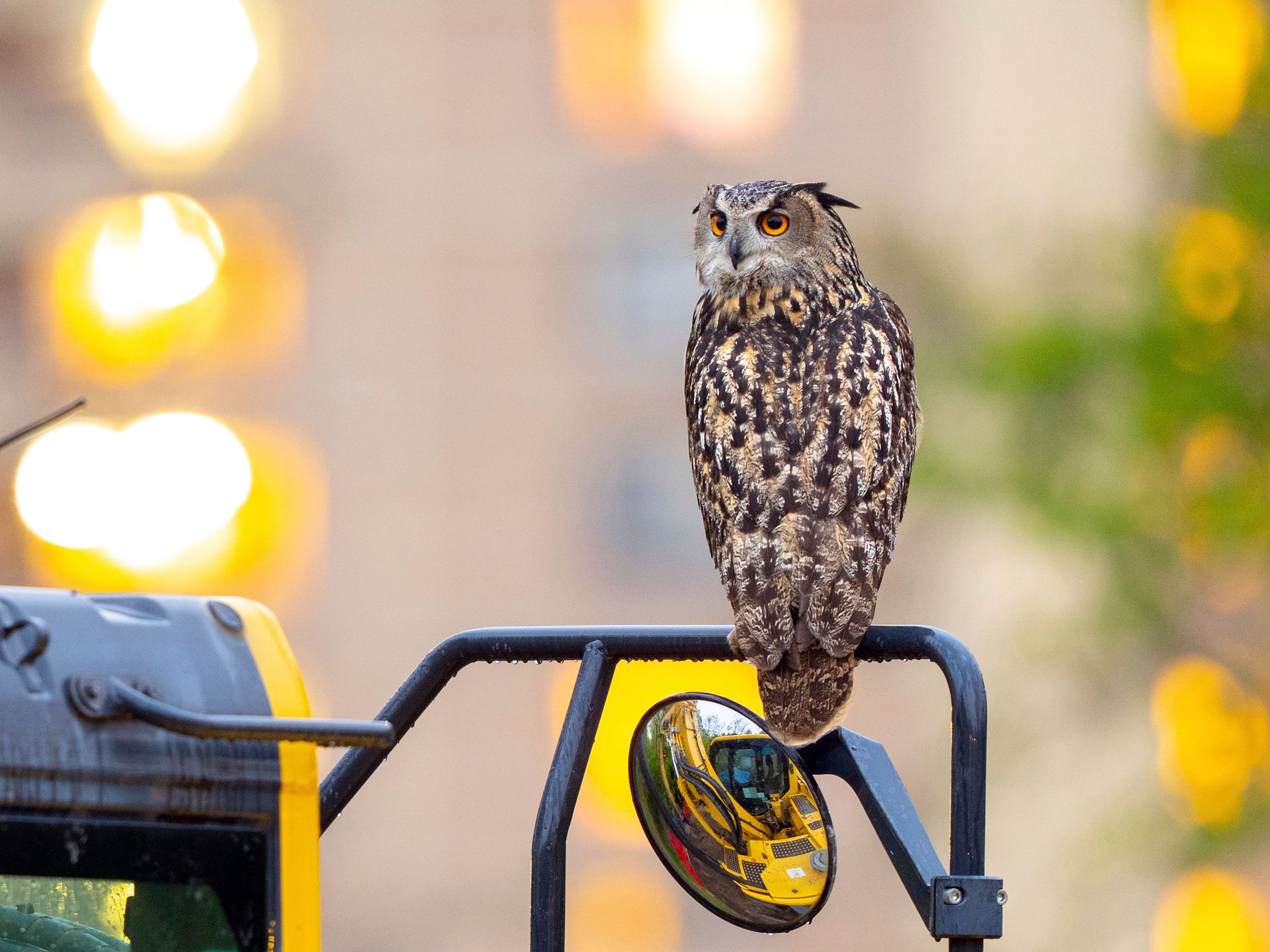
Flaco liked to perch over a construction site which was a hot-bed for rats. The construction workers put up framed pictures of him in their office trailer | David Lei
For the next year, a community of birdwatchers followed Flaco around the park, eventually better understanding his regular haunts and habits. The two photographers in the panel were a part of this birdwatching community, and it was remarkable to get a peek into their passion. They dedicated countless hours in the dark and cold just to hopefully get an opportunity to observe wildlife at work. They even documented this journey in a book, Finding Flaco.
It is from their detailed documenting that we know so much about Flaco’s life, including his diet.
Eurasian eagle-owls are larger than barred owls, so another type of prey was on the menu— pigeons. Flaco’s diet still largely consisted of rats, but the addition of pigeons was thought to be preferential as it reduced exposure to rodenticides.
Nonetheless, a year after his release, Flaco died after colliding with a building in the Upper West Side. The post-mortem again found high levels of rodenticide in his system as well as a type of bird virus which would have made him more susceptible to a building collision.
By that time, Flaco had become famous. There were articles written about him in The New York Times, The New Yorker, and other large publications. A surprising amount of people created a memorial for him at the base of an oak tree where he often perched. And most impressively, legislation was actually passed controlling the use of anticoagulant rodenticide across New York State in an attempt to protect owls, hawks, eagles, and other raptors. Instead, focus has been shifted to controlling rat populations through trash management and less ecologically harmful methods.

Reply